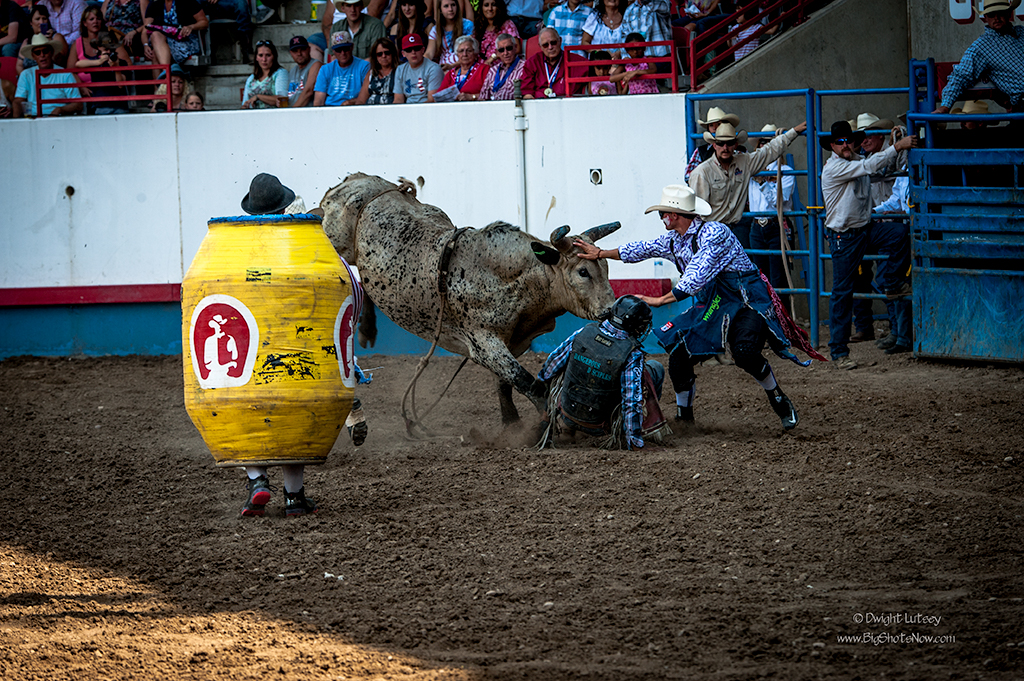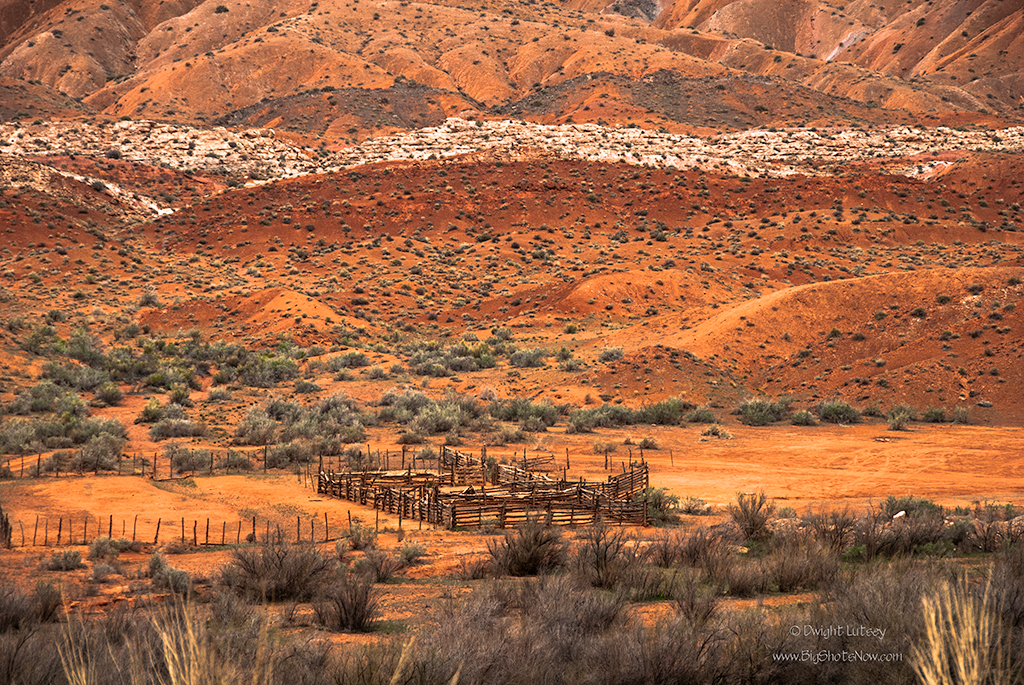This post has been moved to OpenChutes.com. All future postings of Powwows, Indian Relay Races, Rodeos and Rendezvous will be posted there from now on exclusively. So if you’re looking for new images and posts for all those events attended this year, plus all the old posts posted on BigShotsNow.com check out OpenChutes.com. See you there!
It was the 4th of July. It was hot. It was the finals. Tempers were flaring. These final events were being played out before a sold out crowd under a blistering hot sun. It was the kind of 4th of July day you remember as a kid, hot, kind of muggy, and full of anticipation. The little bit of shade there was kept to the area immediately in front of the chutes. For the last week contestants and the rodeo stock had been going at it hammer and tongs deciding who the bull duck in the pond was going to be and this was the last day. Winners and losers were being decided this day and no one wanted to be in the losers category.
The cowboy decided he was going to ride this one out the full 8 seconds, the bull disagreed and tempers flared. Because of the heightened tension, words were said, feelings were hurt and the entire affair turned dangerous in a heartbeat. That’s when the mediator stepped in and with a few well-chosen phrases, a quick well-meaning pat on the head, de-escalated this situation. That’s why these rodeo clowns are so important. They’re not just another pretty face in the crowd. These guys do real work and it’s important, life saving work. It’s why they get the big bucks and as many of those colorful bandanas that they tie around their waists as they want. The rodeo couldn’t go on without them.
This event ended well with the bull being mollified, the cowboy convinced to try it again later and the whole situation was reloaded for the next set of contestants. That’s how things work in the finals.
The 4th of July was the last rodeo for this year and it was the culmination of five rodeos held during the preceding week. As in all events like this there were winners and losers. The winners, who were the first among equals, had produced the best scores overall and were rewarded with money, and a beautiful silver belt buckle, the Oscars of the rodeo world. The losers, who aren’t really losers but those that through bad luck, a mishap, a bad day, didn’t make it to the winners circle. But every day is a new day and these guys are nothing if not optimists, so they ‘re off to the next rodeo, the next event and the chance to become champion for a while.
The Greeley Stampede is an incredible rodeo, a show the likes of which you seldom get to see. If you missed it this year put it on your list for next year, you won’t be disappointed. This isn’t scripted watered down reality TV, this is the real deal. Things happen here unexpectedly and the drama will have you on the edge of your seats. You can even get popcorn here if you need it to watch the show. If you can’t make it out here to Greeley Colorado for this rodeo then there should be one near you that you can attend. If so, do it. It’ll make your day.



You must be logged in to post a comment.